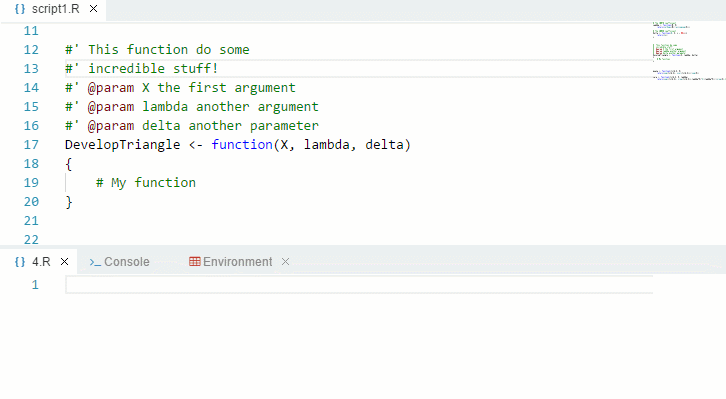
Python faste rcode how to#
PART II- HOW TO USE PYTHON SCRIPTS INSIDE R SHINY You’re doing good! Let’s have some snacks before moving on to the next phase. Try to change the Number of Bins Slider and experience how fast the Histogram making changes to the Number of Bins.

Then try to hit run and see what brings out to the browser page: If you want to go through more examples, There are plenty of examples in this page provided by Shiny R Studio. This is the same basic structure for all Shiny applications. We save all of this code, the ui object, the server function, and the call to the shinyApp function, in an R script called app.R. Xlab = "Waiting time to next eruption (in mins)",įinally, we use the shinyApp function to create a Shiny app object from the UI/server pair that we defined above shinyApp(ui, server) Hist(x, breaks = bins, col = "#75AADB", border = "white", # re-executed when inputs (input$bins) changeīins <- seq(min(x), max(x), length.out = input$bins + 1) It is "reactive" and therefore should be automatically # This expression that generates a histogram is wrapped in a call # Histogram of the Old Faithful Geyser Data. Server # Define server logic required to draw a histogram. The comment above the function explains a bit about this, but if you find it confusing, don’t worry, we’ll cover this concept in much more detail soon.
Python faste rcode code#
However, you’ll also notice that the code that generates the plot is wrapped in a call to renderPlot. At one level, it’s very simple - a random distribution is plotted as a histogram with the requested number of bins. The server-side of the application is shown below. # Sidebar layout with input and output definitions. Ui # Define UI for app that draws a histogram. The user interface is defined as follows: For now, though, just try playing with the sample application and reviewing the source code to get an initial feel for things. In subsequent sections of the article, we’ll break down Shiny code in detail and explain the use of “reactive” expressions for generating output. You can either create a one R file named app.R and create two seperate components called (ui and server inside that file) or create two R files named ui.R and server.R (figure 1.0) The source code for both of these components is listed below. Shiny applications have two components, a user interface object and a server function, that are passed as arguments to the shinyApp function that creates a Shiny app object from this UI/server pair.

PART 01-CREATING A SHINY APP The basic parts of a Shiny app

Let’s see how to get the maximum out of R and Python for a Shiny Dashboard! Who said you have to choose between one over another?ī ecause and this is my answer!: We are data scientists, We know how to code in R and Python both! Why can’t we use R+Python for our development right? It’s not rocket science it’s Data Science and that’s what we good at. If you’re after more detailed comparison, click here.

I would say that right now Shiny might be a little better, especially if your needs are more complex dashboards, but I feel as Python community is so much larger, Dash is exponentially growing up and it could surpass shiny in general as Python can be used for multiple stuff and who knows what else Dash can evolve to be. Also, developing new components will need ReactJS knowledge, which has a steep learning curve. Dash doesn’t have a proper layout tool yet, and also not build in theme, so if you are not familiar with Html and CSS, your application will not look good (You must have some level of web development knowledge).


 0 kommentar(er)
0 kommentar(er)
